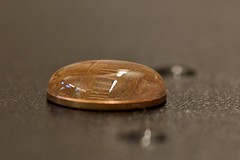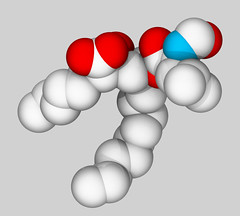![]()
![]()
![]()
Use LEFT and RIGHT arrow keys to navigate between flashcards;
Use UP and DOWN arrow keys to flip the card;
H to show hint;
A reads text to speech;
7 Cards in this Set
- Front
- Back

Polar Molecules |
In order to have a polar molecule, there must be unequal distribution of the negatively charged electrons in the orbit of the molecule. The dipoles are unequally charged either because of the net electronegativity of the molecule or by the shape of the molecule causing the negative dipole. |
|

Enzyme |
a substance produced by a living organism that acts as a catalyst to bring about a specific biochemical reaction. |
|

Carbohydrates |
any of a large group of organic compounds occurring in foods and living tissues and including sugars, starch, and cellulose. They contain hydrogen and oxygen in the same ratio as water (2:1) and typically can be broken down to release energy in the animal body. |
|

proteins |
any of a class of nitrogenous organic compounds that consist of large molecules composed of one or more long chains of amino acids and are an essential part of all living organisms, especially as structural components of body tissues such as muscle, hair, collagen, etc., and as enzymes and antibodies. |
|

Cohesion |
the sticking together of particles of the same substance. |
|

Adhesion |
the action or process of adhering to a surface or object. |
|

Capillary action |
the tendency of a liquid in a capillary tube or absorbent material to rise or fall as a result of surface tension. |

